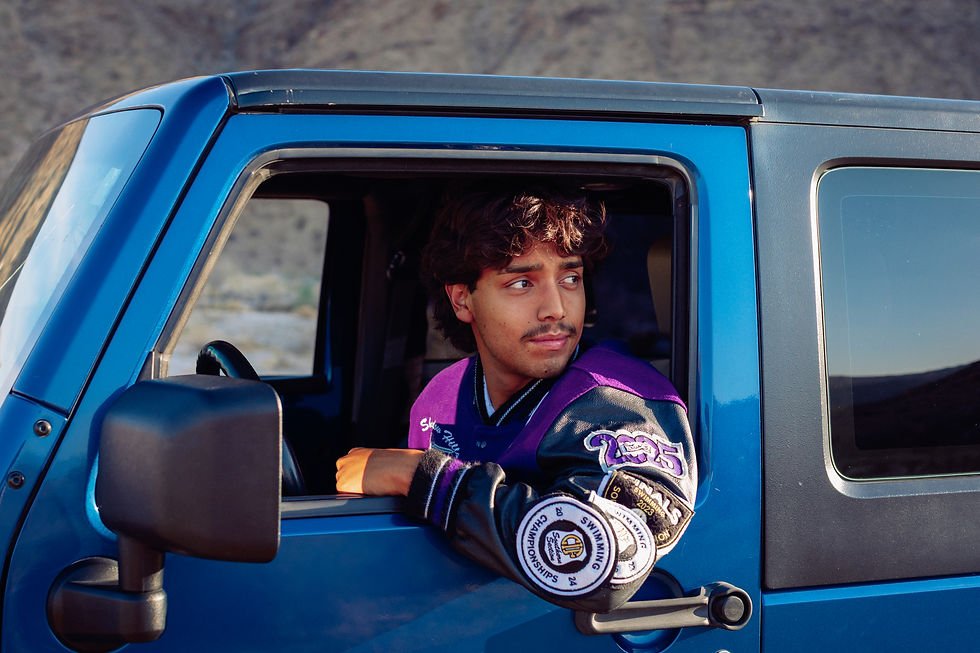In California’s High Desert, a Dance Collective Is Creating a New Galaxy
- Sarah Jackson
- May 16
- 3 min read

In California’s High Desert—stretching across Joshua Tree, Yucca Valley, and Twentynine Palms—a creative movement is quietly transforming the landscape. Far from the coastal sprawl of Los Angeles, a loosely organized but deeply inspired dance collective is turning the desert into a stage, reimagining classical works with dusty feet and rocky backdrops.

Dance Mojave, a volunteer-powered nonprofit with no fixed location, is a growing force in this rural arts revival. Its mission: to make high-quality, community-driven performance accessible to everyone, regardless of age or dance experience. In December 2023, the collective premiered The Desert Nutcracker, a local twist on the holiday ballet, performed at the Joshua Tree Retreat Center. This May, they followed it with The Planets, a cosmic dance experience staged outdoors at the Sky’s the Limit Observatory in Twentynine Palms—perhaps the most fitting venue imaginable for a piece inspired by outer space.

Set to The Planets, Gustav Holst’s iconic orchestral suite composed between 1914 and 1917, the show honored the epic original while boldly expanding its boundaries. Holst’s music—familiar to many from Star Wars, film trailers, and even the Bluey episode “Sleepytime”—gives musical voice to seven planets and their mythological associations: the urgency of Mars, the exuberance of Jupiter, the mystery of Neptune. But it omits several celestial bodies known to modern audiences.

To complete the cosmos, Dance Mojave collaborated with High Desert-based musician Jeremie Samson Levi, who composed original movements for Pluto, The Moon, and The Asteroid Belt. These new sections, performed live by Levi’s whimsical “Intergalactic Orchestra,” added emotional depth and imaginative dimension to the show. Levi’s wife, writer Jacqueline Herrera, danced in The Asteroid Belt alongside their children, who performed in Venus. She also supported the production through grant writing and community outreach, embodying the all-hands spirit that defines the collective.

The storytelling in The Planets—like in The Desert Nutcracker—blended classical technique with local culture and joyful experimentation. That Nutcracker production had been adapted into a desert-themed narrative by collaborators Alex Valdivia and Lauren Slivosky, who gave the ballet a fresh sense of place. A standout performance featured a snake duet, danced by local Pilates instructor Nicole Tarro and professional snake relocator “High Desert Dani”—a perfect example of Dance Mojave’s flair for casting that’s both intuitive and wonderfully unexpected.

Every dancer in the collective has a story: Some are trained performers returning to the stage after decades; others are children dancing for the first time; and still others—like this writer—found themselves swept into rehearsals after simply volunteering to help. I originally offered my photography services as a creative outlet. As a former dancer and now a mother, I never expected to perform again—let alone in a full production alongside my daughter. But like many others, I ended up dancing, photographing, and rediscovering a part of myself in the process.

The High Desert is often painted as a quiet escape or a quirky artist enclave, but what’s happening here is far more nuanced. The region is evolving rapidly. After years of tourism-fueled real estate booms and busts, more full-time residents are putting down roots. Families are moving in, homeschooling, launching businesses, and—perhaps most importantly—collaborating. Creativity here is not a product to be consumed but a thing to be lived.
Dance Mojave reflects this ethos. It’s inclusive, community-led, and refreshingly unpolished. You don’t need a resume or a headshot to join—just curiosity, commitment, and maybe a little courage. And in return, you get something increasingly rare: art that grows from within a place, not imported into it.
From the swirling storms of Jupiter to the silent shimmer of Neptune, The Planets was more than a performance—it was a portal. It asked us to imagine our universe not in distant galaxies, but right here in the sand, the wind, and the outstretched arms of our neighbors.
Something is happening in the High Desert. And it’s worth watching.


















Comments